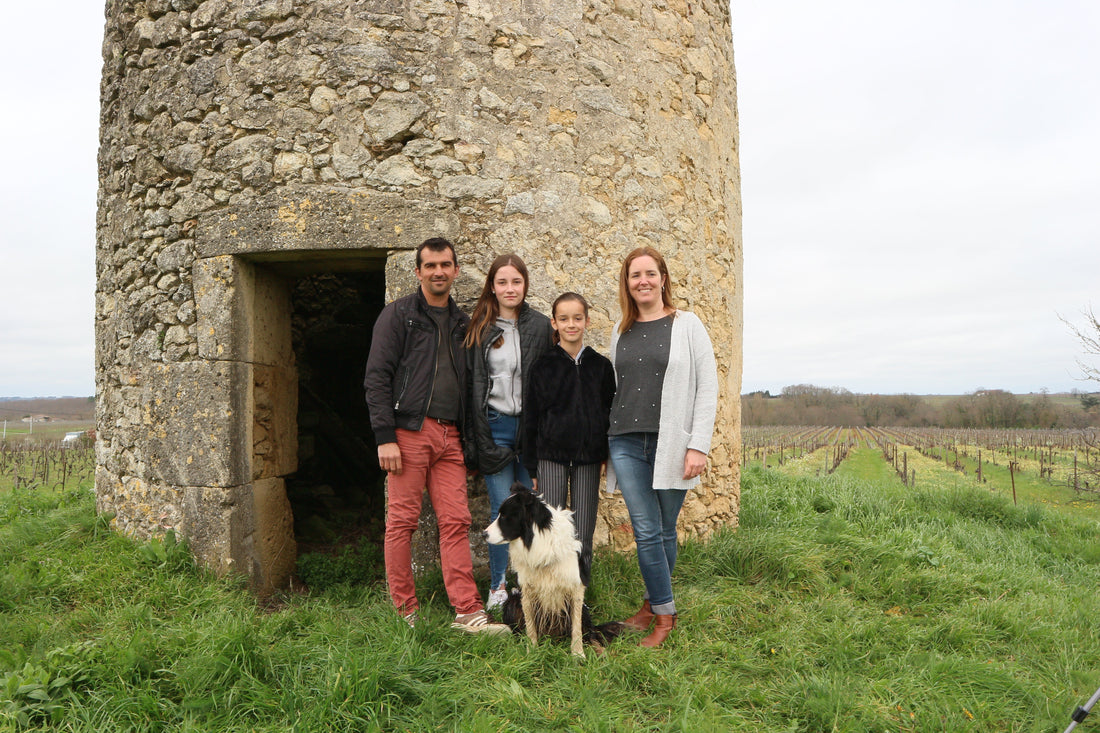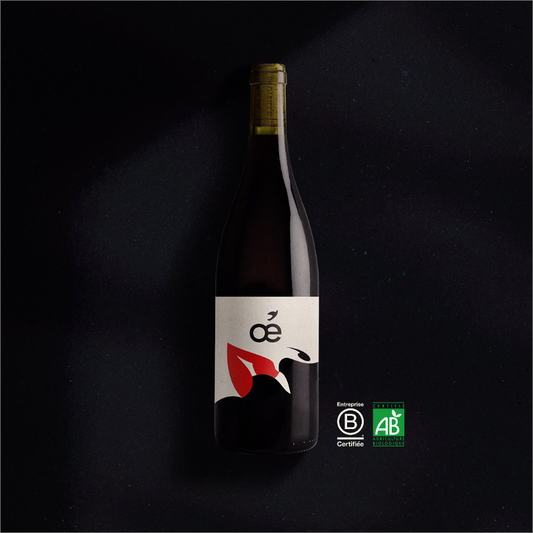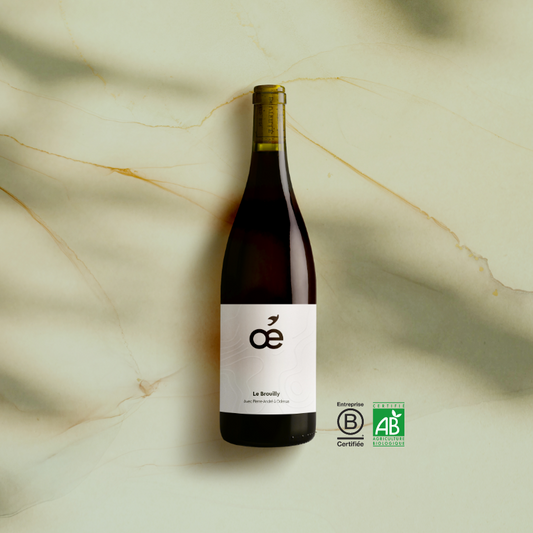Agroforestry? Does it speak to you? There is “agro” and “forest”. This must have something to do with trees, you might say. You're almost there, come on, we're nice, we'll help you. At Oé we like to cultivate and cultivate ourselves, we give you a little overview of this practice. Let's go !
What is agroforestry?
Agroforestry is neither more nor less the association of forestry crops with trees and/or animals on the same agricultural plot . “Forestry culture”? Yes yes, we explain! Forestry is the set of methods and practices that a forester or farmer puts in place to act on the development and sustainable management of a plot to obtain benefits or products without degrading the environment. In other words, this practice makes it possible to sustainably manage one's exploitation .
Agroforestry techniques can be implemented in the field or on the edge. This type of companionship , used in several types of crops, lends itself perfectly to viticulture due to its many benefits (ecological, societal, economic) and in particular on biodiversity. Cannon isn't it?
The different types of plots
There are a multitude of types of agroforestry plots: pre-orchards, pre-woods, bocage hedges, crops associated with livestock or not. The trees can be isolated , inserted between the rows of vines, in open fields or in hedges on the edges of plots. Do all these words seem incomprehensible to you? Can't see the topic yet? Don't panic, we'll explain everything to you!
Meadow orchards are types of orchards associated with fruit trees and grasslands, meadows relate to grasslands associated with wood production . Bocage hedges are hedges made up of different types of wood.
There are many tree species : poplars , fruit trees (with pips or stones), truffle trees (oaks and hazelnuts), fodder trees and timber can be used, for example to make agroforestry .
As far as the presence of animals is concerned, it is naturally essential. Sheep (goats, sheep) can be used to regulate vegetation , poultry are good allies in the fight against soiling of vines . There are plenty of examples, but you get the idea!

The return to favor of an ancestral practice
Agroforestry is far from being a new practice, it is a historical practice brought up to date thanks to its benefits on biodiversity . Already in the Middle Ages, it was not uncommon to find agroforestry plots in our beautiful regions such as Aquitaine or Garonne. We can go back even further, to Antiquity, to find evidence of the existence of the practice in Mediterranean areas. Today, many landscapes still bear traces of this agricultural heritage.
The use of this agriculture is explained by the optimization of cultivable areas by diversifying production as well as by the protection of the vines against weather conditions ( frosts, winds, drought). The phylloxera crisis in the 19th century accompanied by mechanization unfortunately made the practice fall into disuse.
But over the past twenty years, we have witnessed a return to grace in viticultural agroforestry. The use of agroforestry plots appeals to modern farmers because they respond to an approach of ecological intensification within crops. This means that we seek to aim for high-yield agriculture while limiting the use of inputs as much as possible. The practice of agroforestry is particularly appreciated by winegrowers and organic farmers. For the winegrowers, the advantages will be numerous: the trees create a microclimate that promotes yields, contributes to better soil erosion, optimization of resources and development of biodiversity.
To discover our organic wines, it's here
The benefits of agroforestry
The roots of the tree create conditions in the deep layers of the soils and promote the supply of water and minerals to crops on the surface. They limit the leakage of nitrates into the deep layers and reduce pollution in groundwater . When the dead leaves fall to the ground, they give organic matter to the soil and an important contribution in biomass . About 40% of a tree's biomass returns to the soil, improving its fertility . Some tree species can even fix nitrogen and feed crops, reducing input use. It's magic, isn't it? No, it's organic farming .
The multiple benefits of agroforestry
Limiting soil erosion, pollution and inputs , increasing organic matter and fertility ...And all that by planting trees and hedges ? And again, we haven't told you everything. Agroforestry also contributes to creating a microclimate in the vines. Nature is wonderful, don't you think?
A microclimate in the vineyards
Trees have the ability to regulate the climate. They can act as windbreaks and shield crops against frosts and drought. How it is possible ? Quite simply thanks to the action of the tree and its many properties. The branches and leaves shade the vines, helping to reduce turbulence and temperature peaks. The roots receive and recycle the water which leads to an increase in humidity and a cooling of the air. Trees have the ability to absorb C02 and store carbon, which reduces the effects of climate change. We can never repeat it enough: the most responsible on this planet are the trees!

Effects on the economic profitability of farmers
In addition to its ecological benefits, agroforestry has many significant economic advantages. INRA has demonstrated that an agroforestry plot of 100 hectares could generate as much biomass as a normal plot of 136 hectares , ie a rather substantial gain in productivity. This practice also has the advantage of diversifying production: fruit, straw, timber, fuelwood . Farmers can offer different products but also save on their own consumption and on their purchase of inputs. A real added value!

What about surface loss? Studies have shown that during the first year, only about 8% of the surface occupied by the trees is lost . With reasoned agriculture or organic and well-organized agriculture, the drop in yields can be largely minimized and cushioned by the other benefits of the plots.
Agroforestry and biodiversity in the vineyards
Biodiversity in the air...
When a thunderstorm falls on the roof of your house or you see a hailstorm coming your way and you don't have an umbrella, you are not reassured, are you? Well for the animals in the vineyards, it's the same thing. By favoring the creation of a microclimate, agroforestry makes it possible to avoid stress in animals. Trees and hedgerows provide habitat and food for wildlife, including crop helpers and pollinators . This contributes to a return of biodiversity to areas that were once neglected due to the lack of natural elements or pollution. Birds, bees, bats and arachnids are once again invited to the party!
… down to the ground!
Planting is accompanied by the establishment of grass , to the delight of earthworms. These species are indicators and actors of soil quality. They are sensitive to certain components, such as chemical inputs or soil degradation, and willingly return to terrain that will limit human intervention as much as possible. By creating tunnels, they participate in the circulation of water and carbon and in increasing fertility. In short, a give-and-take relationship.
Diversity also occurs at the level of micro-organisms (fungi, bacteria). These represent the most abundant and diverse species within them. As with earthworms, they are sensitive to soil degradation and their presence is a good indicator of soil quality. Man even created the vermicomposter, in the image of our friends the earthworms to make fertilizer, if you want to know more, here is an article that talks about the subject 👉🏼 here!
Advice and support
Embarking on agroforestry is not done lightly, several parameters must be taken into account according to the objectives of each one. You have to know what types of species (trees) to plant , choose the right planting distances, know how to maintain your plot. The Chambers of Agriculture can support farmers in their agroforestry project.
The Vitiforest project is an experimental project designed to assess the relevance of agroforestry in viticulture. This project is carried out in three diverse viticultural contexts ( Bordeaux , Cahors , Côtes de Gascogne ) and a good source of information concerning the advantages of agroforestry plots.
Aid exists at different levels to encourage the planting of trees in vineyard plots . This aid can come from departments, regions, the government, or even from Europe. The government also has 50 million euros for the “Plant hedgerows!” operation. » . which encourages farmers to plant hedges on their plots.

Choice of essence and maintenance of its plot
From our side we can give several advices, in terms of the choice of species and the maintenance of its plot.
Trees with light foliage and/or late species such as walnut or ash will not compete with the vines. Pine attracts insects that regulate the presence of pests just as fruit trees attract insectivorous birds. But the arrival of birds or bats must always be accompanied by the establishment of infrastructures to promote their habitats, such as nesting boxes for example. Finally, the diversity of species leads to a diversity of crop auxiliaries , which is good for biodiversity.
Also favor a North-South orientation to limit shade on the vines. As for the distance, a distance of 4 meters must be provided between the row of trees and the first row of vines, and a distance of 30 meters between each row of trees. In viticulture, an agroforestry plot can be limited to a density of 30 to 40 trees per hectare.
The Vitiforest project does not note any obvious competition between vines and trees over the first 10 years. However, techniques exist to limit competition: tree pollarding every 10 years or irrigation to regulate water competition. Topping is nothing other than the cutting of the upper part of the tree, research has chosen this term so as not to make you tremble with the term “vegetable decapitation”... We agree, “topping ", it's much better ;)
The social impact of agroforestry
The practice of agroforestry responds to a growing ecological demand from consumers. We are more and more concerned about the environmental aspect of our purchases and we want to buy organic and produced locally. Agroforestry plots are true allies of biodiversity. They limit the use of chemicals and human intervention as much as possible.
This is the case of our winegrowers Franck and Véronique in Pujol who have chosen this practice. Franck and Véronique make red , fruity and light wines that can be drunk with everything. For them, the practice of agroforestry has become obvious in order to develop their organic farming. They planted hedges, left areas of plant diversity to promote biodiversity in their vines. It is from their grape varieties that our delicious Bordeaux comes.
As part of the Oé Program for Biodiversity, we are partnering with Ecofarms and Miimosa to help Franck and Véronique with their projects.





